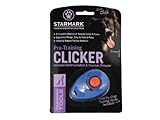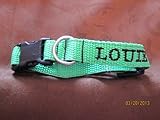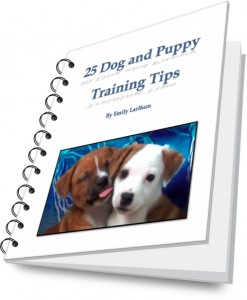This was the 3rd year I lined up at the starting line of the Wild Idaho Endurance Race.  In 2011, this was my first official 50 mile finish and in 2012 I opted to do the 50k since I was training for a marathon that I wanted to do well at the following month (seeing as how this course has over 8,500 feet of vertical in the 50k that was probably not the best training decision ever and my race time the following month would reflect that), but this year I was eager to run the 50k again as I’ve achieved the main goals already for the year (Boston (BQ) and a Belt Buckle (Antelope Island Buffalo Run) and many other races already this season.

This was the perfect place to soak away any pre-race tightness in my IT band! It was bubbling hot and heavenly!
Wayne and I decided to come alone this year and leave the five kids with my parents. That turned out to be a really nice decision. We were able to unwind, relax as we settled into camp and then we headed out to the Boiling Springs natural hot springs after the pre-race meeting and dinner with several friends for some soothing time in the warm water, which I was sure would be beneficial to my IT band, which had been causing me problems in the last two races. Â I think it helped too! I felt calm and my muscles felt great after a nice, long soak.
I set up all of my gear the night before on the separate bed in the tent trailer (another perk I had since the kids were at home and not sleeping in it!) I set my alarm and then settled into bed with Wayne and got some shut eye. Usually I don’t sleep very well the night before a race, but I fell asleep pretty easily (maybe I should always take a hot bath the night before races to mimic the effects of the hot springs in the future!)  I woke to the sound of the race director, Ben Blessing (a former Marine and current National Guardsman) playing Taps, which I thought was awesome – even though it was 5 am and I’m sure some of the deer and squirrels might not have appreciated the early wake up call in an area that is usually so nice and quiet at that time of day!
I was happy that Wayne decided to get up with me and see me off at the start. He’d considered sleeping in and enjoying a little more shut-eye before going fishing with his buddy, but it was nicer to have him there with me in the early morning chill to keep me warm and to take a few pre-race photos which are always excellent souvenirs for later!
I walked as far back as possible to avoid going out too fast since I’d had IT band troubles in the last two ultras I did in July and wanted to stay conservative in the first half to keep any more troubles at bay.  Ben counted down and we were off!  I settled into an easy pace and noticed my sweet friend, Mariah Crump was near me and so we settled into a comfortable pace and started catching up.  Mariah has been such an upbeat, fun addition to the Boise Trail Runners gang.  I first met her last year while pacing IMTUF 100 miler.  She was at the last aid station (a huge robin egg blue bus out in the middle of nowhere, which had me questioning my sanity at first since I thought it was a mirage!)  She was perky and fun and helpful at her aid station and she was dying to do her first ultra, which is always fun to see in another runner!  She set her sights on working hard and doing all the races in the Ultra Series so she could do well at the IMTUF race herself in 2013!! And, she’s knocked out race after race since that time – always smiling, always staying positive and it was fun to listen to her talking about the journey she’d had to get this far, with much success this year!
The morning was just dawning as we ran down the dirt road and then jumped onto a fun bush-whacking bit of early morning fun through the pine trees and bushes, hopping over logs, dodging rocks.  There was plenty of chatter at the back of the pack and we did our best to warn those behind us when a tree branch would come smacking our way or a big rock would be suddenly underfoot, threatening to trip us up “BRANCH!!†“ROCK!† It was fun!
My legs felt great and my spirit was light as I ran the familiar dirt road up towards the Silver Creek Lookout saddle aid station at mile 4.4.  Once I hit that, I knew there would be more uphill to the Silver Creek Lookout tower and I was looking forward to the gorgeous vista that awaited me at the top.  I saw my pal, Mark at the aid station along with his two golden retrievers, Cali and Norman and said hi as I checked in and out and headed up the climb.  The dogs have ran with me before and must have thought it was time for a little leg stretch as I headed by because within a couple minutes they were both running right beside me! I heard Mark say “No, Cali! No Norman! Come here!†I paused and thought they did too and were heading back but before long I heard panting and there they were again – right in front of me – leading me up the hill.  I giggled, thinking how it looked like I’d just adopted two really strong climbers to pace me up the climb!  We had a fun time, too running up the hill and saying hello to my faster friends who were coming back down from the summit on the out and back.  I had a pretty good laugh when I looked up and saw my friend, Derek running fast downhill with a new black pup by his side too! I yelled out, “Hey! You got a dog!!!†And he said, “You got TWO!†and we both started laughing.
By the time I reached the lookout, I’d heard my friend Tony was at the top taking the race photographs, so I had already planned out how I wanted to do a leaping shot.  Tony was quick with the camera and captured me in midair on the first try, which was pretty cool! The guide at the top saw the two dogs and offered them some water, which I thought was really nice. I’d been sharing water from my pack with them, but this was in a nice dish on the ground, which was a lot nicer for the pooches!
After their drinks, the three of us headed down! I was feeling frisky and ready to test out the legs on the downhill (one of my all-time favorite sections of any race course I’ve ever done since it’s a nice grade and the dirt road is smooth and not technical at all!) You can really let loose and FLY on those couple of miles coming down and I didn’t hold back! I just relaxed and let my body do what it loves to do more than anything when I run – head downhill, gobbling up ground with every quick turnover, lightening fast!  Mark had hiked up the climb and headed back up to the top to hang out with the dogs until most of the runner traffic was through and I headed back down to the Silver Creek Saddle aid station at the bottom, smiling, feeling free and (as my friend Ray would say.. “Living the dream!!†)
I flew down that section, logging my fastest miles of the race – Mile 8 was a 6:34 pace (a PR mile for me actually, which was fun to see and it didn’t feel hard at ALL), and mile 9 was 6:51. I was grinning from ear-to-ear, passing several people and having a ball! That has been my experience on that section three years in a row.  But, quickly I reminded myself of how things went badly for my IT band in 2011 after I had too much fun hammering this downhill, so I eased up after checking into the Silver Creek A.S. again and then headed to the left towards one of my very favorite sections of this course – some sweet, roller coastery mini hills along the ATV trail, through lush greenery and forest.  At this same section last year a deer had come bounding out from the forest above the trail and nearly collided with me as I came running along. I stared up into the trees wondering if a repeat was in order, but all was silent and still.  I breathed deeply of the fresh morning mountain air and smiled as I ran.  I thought of all the friends I’d passed along this section (another out and back) as we high-fived or hugged or said hello along this path and it made me feel really at home and happy to be there again – reminiscing with some wonderful old memories.
I ran for about a mile and a half to the 50k turnaround and then headed back up. I turned on my IPod and started rocking out to some Queen and Pink and started playing air guitar for every pal I passed, trying to make them smile! I was having fun, feeling sassy and the miles were just ticking off easy as pie!  When I arrived back at the Silver Creek Saddle A.S. for the third and final time, I waved at my pals manning the station and then headed back down the dirt road I’d climbed earlier that day back towards Boiling Springs.  I was all alone by this point and just in my element. I used the downhill to practice good, tall running form and a tucked in pelvis (being mindful of some of the poor posture that may have contributed to IT band issues I’ve had in the past.) I felt wonderful, glanced down and saw I was comfortably still hitting a 6:30 – 7:30 pace and stopped to pop a Werther’s coffee candy into my mouth and do a little stretching. I was feeling perfect, but figured I shouldn’t push too crazy hard since the worst of the race (and the bulk of the climbing) were coming up in the second half!  As I stood there on the side of the road stretching, I suddenly heard someone coming up fast behind me.  My instincts kicked in and without so much as glancing back I bolted back to my previous pace, knowing someone was hunting me down!
After about a minute my pursuer caught up to me. He was a red-beared man with a friendly smile and flowing red hair and he said “Great pace, girl!†I smiled and said, “Thanks!†That’s when I realized who he was! He was Johan Steene, a really fast runner from Sweden! He was running the 50 miler (which involves two trips up to the Lookout and another little out and back at the bottom of the ATV trail so he was several miles ahead of me in distance) and after glancing at my watch I realized he was on pace for a course record!!!!!! I gave him due respect and told him I wished him well! That mile or so was definitely one of the highlights of the entire race for me, though (since he did in fact, go on to win the race and smash the course record!) He came to me later, after the race and told me he’d enjoyed our chance to run together for that small section, which I thought was really nice! ![]()
After letting Johan go and settling back down to a pace that seemed smarter for me, I ran until I was back at the start/finish at Boiling Springs – a little over 18 miles into the race according to my Garmin. I saw Johan leaving the aid station just as I came in.  I was excited to see my husband waiting there, ready to offer me assistance! I handed him my Nathan and asked for 40 oz of cold water and ice and I headed to the porta potty for a quick stop.  After I grabbed a quick bite at the aid station – choosing some watermelon and considering the avocado which looked delicious, then heading back out for the second part of the course – which I knew from past experience was a grueling, steep climb up to the Skunk Creek aid station via the Wet Foot Trail.
I was really happy about a mile into this section to hear footsteps behind me and see my friend April catch up! I just love April and it was nice to have a close friend nearby for some good conversation! We would happily end up spending nearly all of the the last half together, which was awesome! This was April’s first time doing this race so it was nice to let her know what was coming up next and to help each other pass the time up the steep climbs in the heat of the day on the very dusty, steep and somewhat technical trail.  About a mile up the trail, I saw my buddy, Jose running towards us and he was limping.  I stopped to find out what had happened and learned he’d fallen hard and hurt his knee pretty badly and was heading back to the start/finish to drop from the race since he was concerned the injury would get worse if he kept running on it.  We hugged him and wished him well, then headed up, up, up the Wet Foot Trail.
I have so many good (and bad) memories along this section! My IT band seized up on me in my 50 miler in 2011. I was limp/hiking up and down this pass at a much slower pace that day, swatting the swarms of horseflies that kept biting at me.  This time the IT band was feeling great and there were no horseflies in sight! I pointed out the huckleberry bushes all along one section of the path to April and told her I’d eaten my very first huckleberries right there two years ago in the middle of the night when my friend had given me a few. Fun times!
We took some tasty watermelon at the Wet Food A.S. then headed up towards Skunk Creek for a couple more miles. We survived the climb (which I have to admit by the third year in a row wasn’t so bad at all), we headed into the Skunk Creek aid station at mile 25. April and I were on pace for a sub 8 hour race, which was my goal and we were in good spirits! We sat down at the A.S., enjoying the company of some friends of ours who were taking great care of the runners, when all a sudden, I heard someone whooping and running fast into the A.S. It was my buddy, Derek!!!!  He was cruising quickly right at us and just before he reached us he leaped into the air for an epic heel-click (something Derek is known for – he’s definitely a runner with a little flourish!)  Just as he came down, I saw his face contort and he cried out and grabbed his leg. I rushed to him and tried to keep him from falling and helped him limp over to a chair.  It turned out his calves were cramping up pretty bad with the combination of the extreme climbing and the heat.  The aid workers quickly went to work massaging his calves and getting him hydrated and offering him S caps! They were attentive and on-the-ball and I wished Derek well and April and I headed back down towards the finish!
Running down, the heat started to creep up in intensity and April and I found ourselves taking more walk breaks than anticipated and I realized that we would probably not hit our sub 8 hour goal after all – but that we would be very close and I would likely get a PR.  As the finish line drew closer, I started to smell the barn and just took off running strong and feeling awesome. I stopped when I heard a friend say my name and realized it was my buddy, Nicole who’d gotten lost just 1/2 a mile from the finish. I yelled over my shoulder, “Follow me! I know the way!†and Nicole and April chased me into the finish.  I came barrelling in with a big grin and did my own epic heel click finish! I beat my finish time from last year by 22 1/2 minutes with a finish time of 8:12, which was totally awesome!
After the race, I headed straight for the ice cold River and sat down in it and soaked away any aches and pains while several other runners soaked with me and we all shared our tales of the trail together. It was a fantastic ending to a pretty perfect day! I said to my  husband, “Why don’t I do more 50ks? This is so great to be finished and still have plenty of energy and daylight left!†I may have to think about that!
Â
Â
Â
































